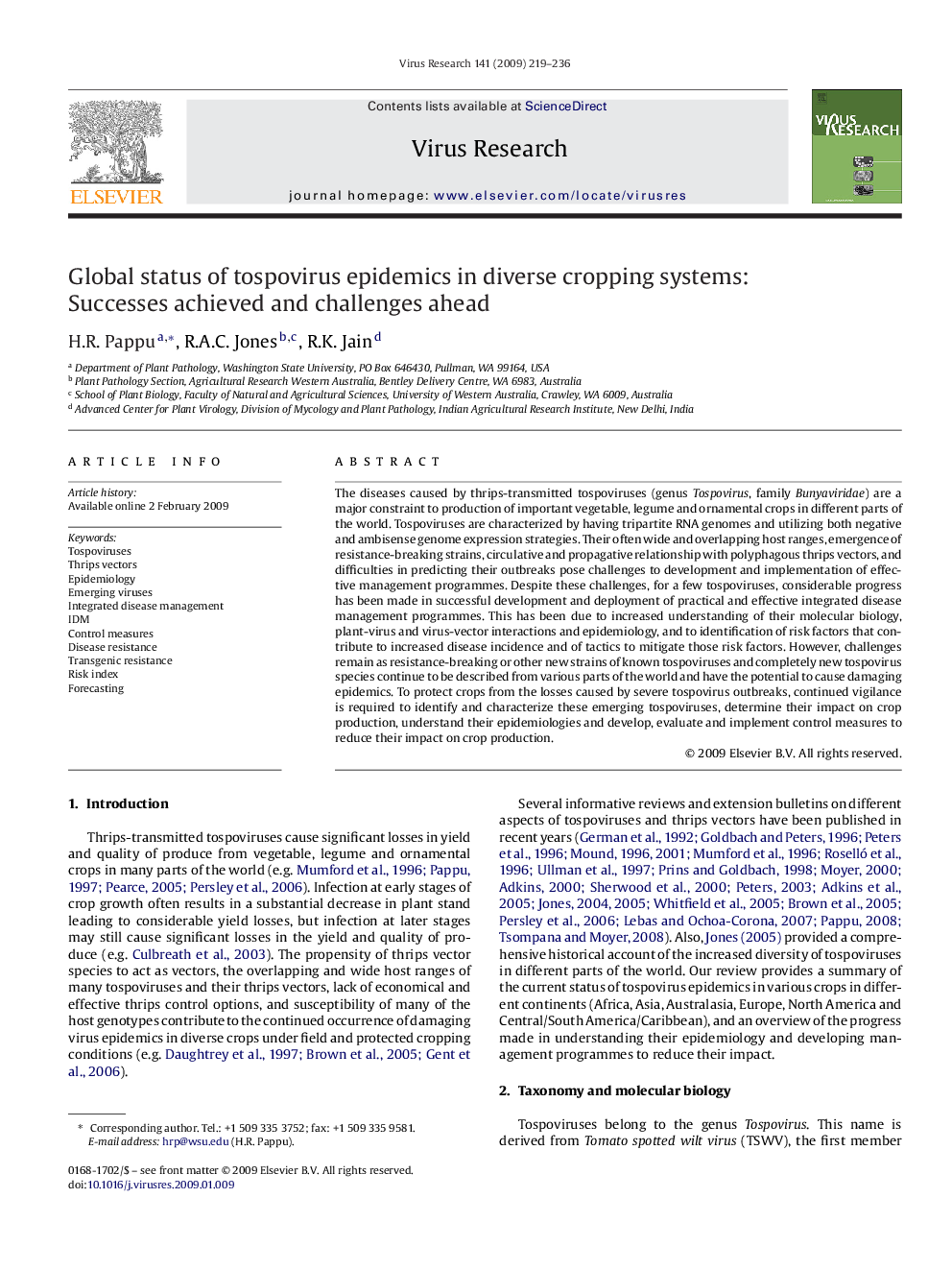| Article ID | Journal | Published Year | Pages | File Type |
|---|---|---|---|---|
| 3430196 | Virus Research | 2009 | 18 Pages |
The diseases caused by thrips-transmitted tospoviruses (genus Tospovirus, family Bunyaviridae) are a major constraint to production of important vegetable, legume and ornamental crops in different parts of the world. Tospoviruses are characterized by having tripartite RNA genomes and utilizing both negative and ambisense genome expression strategies. Their often wide and overlapping host ranges, emergence of resistance-breaking strains, circulative and propagative relationship with polyphagous thrips vectors, and difficulties in predicting their outbreaks pose challenges to development and implementation of effective management programmes. Despite these challenges, for a few tospoviruses, considerable progress has been made in successful development and deployment of practical and effective integrated disease management programmes. This has been due to increased understanding of their molecular biology, plant-virus and virus-vector interactions and epidemiology, and to identification of risk factors that contribute to increased disease incidence and of tactics to mitigate those risk factors. However, challenges remain as resistance-breaking or other new strains of known tospoviruses and completely new tospovirus species continue to be described from various parts of the world and have the potential to cause damaging epidemics. To protect crops from the losses caused by severe tospovirus outbreaks, continued vigilance is required to identify and characterize these emerging tospoviruses, determine their impact on crop production, understand their epidemiologies and develop, evaluate and implement control measures to reduce their impact on crop production.
